Q: Is there śāstric evidence for the understanding that Krishna is the original Bhagavān, the source of Viṣṇu, aside from the commonly quoted Śrīmad Bhāgavatam 1.3.28 and Brahmā Saṁhitā 5.1?
I think the first thing to remember here is that Krishna is a very rare avatāra. He is 1,000 times more rare than any other Viṣṇu Avatāra (Because they appear once per kalpa, but Krishna appears only once in an entire day of Brahmā — 1,000 kalpa). And every time Krishna appears, he is immediately followed by Śrī Krishna Caitanya and his associates, especially Śrīla Rūpa Goswāmī and Śrīla Jīva Goswāmī, etc.
So for 95% of the duration of the cosmos, Krishna is rather irrelevant. He is not known except by those very rare mystics whose knowledge extends beyond the beginning of the current cosmos. Therefore in the vast majority of śāstra Krishna is not directly discussed. Simply put, he is irrelevant to most of the material world, and even most of the spiritual progress going on within the material world, for the vast majority of the time.
But when, just after the 500th revolution of kalpa, at the very end of the dvāpara-yuga, Krishna appears… all of the sudden he becomes exceedingly relevant in this world, although for a short time on a cosmic scale. Krishna is like a flash of lightning or a supernova, very rare, and when it happens it is over very quickly, but while it happens… oh boy is it bright and exciting!
After Krishna appears Vyāsa records his līlā in Bhāgavata Purāṇa. Then there is a period of slight pause, and then Mahaprabhu Arrives with his associates to completely explain Krishna and open a huge doorway for almost anyone and everyone to access the beauty of the Bhāgavata Purāṇa and its object.
So, what I am saying is that most of the time Krishna is irrelevant to the world, and therefore most of the scripture doesn’t deal directly with Krishna. But when Krishna does come, once in 1,000 kalpa he is followed immediately by associates who generate śāstra relevant to his revelation.
So, the words of Mahaprabhu, the words of Kaviraja Goswāmī, the words of Śrī Rūpa, Sanatana, Raghunātha and Jīva Goswāmī… these are equal to and superior to the words of the Sāptaṛṣi who composed the ancient vedas, and the words of the other ṛṣī who composed Upanishads and so on. We do not agree to the idea that simply because something is not extremely old, its not authentic. The relatively modern texts of Śrī Rūpa and Śrī Jīva, for example, are superior to the Purāṇas, Upanishads, and Vedas – because they were written during the “supernova” of Krishna’s revelation.
In the very old Vedas, there is still indication of Krishna but it is indirect. In other words, he is not mentioned much by name, but is regularly pointed to as an ideal.
Two classic, important, examples are
(1) the Vedanta’s analysis of the Upanishads, stating ānanda-mayābhyāsāt — “The Upanishads repeatedly declare that the ultimate life is composed of bliss itself.”
(2) Taittiriya Upanishad, stating raso vai saḥ — “The supreme is certainly rasa himself.”
So, the Upanishads (which bring out the philosophical import of the four Veda) repeatedly point to bliss / rasa as the true essence of life – and that is really what the Krishna conception is. Krishna is the supreme life, and thus the supreme rasa, the supreme bliss. So our ācāryas, like Madhvācārya, confidently say, “All the Vedas glorify Krishna.” And even Krishna says, in Gītā, vedaiś ca sarvair ahaṁ eva vedyo — “The real thing to be known in all the Vedas is me.”
Madhvācārya says (in commenting on Gītā 2.24), that the older Vedic scriptures can be most clearly understood for what they really are pointing towards only if we study them in light of the newer scriptures (especially the Gītā. In Bhagavad Gītā, several statements support that Krishna is Bhagavān and even svayam Bhagavān.)
In this way, we are quite content with the 3rd chapter of canto 1 of Śrīmad Bhāgavata Purāṇa (which elaborately and explicitly makes the point that Krishna is svayam Bhagavān, and the origin of all avatar), and with the Brahmā Samhita discovered by Śrī Krishna Caitanya, and with the statements of Mahaprabhu and the Six Goswāmīs.
Here are a few more instances of indirect descriptions of Krishna in the Upaniṣads:
The essential declaration that the supreme is an entity possessing personality, and desire to expand (the root nature of Krishna) is made all across the Upaniṣad. For example: Chāndogya Upaniṣad (6.2.1):
sadeva saumyedam agra āsīd ekam evādvitīyam
tad aikṣata bahu syām prajāyeya
“In the beginning the One was certainly undivided, and desired to manifest as many.”
Aitareya Upaniṣad (1.1-2):
ātmā vā idam eka evāgra āsīn nānyat kiñcana miṣat
sa īkṣata lokān nu sṛjā
“In the beginning there was certainly only one entity, and nothing else. He desired to manifest all things.”
The Gītā declares in many places that Krishna is Bhagavān, who is defined as the origin of Brahman. For example (Bhagavad Gītā 14.27): brahmaṇo hi pratiṣṭhāhaṁ – “I am certainly the very foundation of reality (Brahman).”
A later Upaniṣad, Gopāl Tāpanī Upaniṣad (Pūrva 50), mentions Krishna by name:
tasmāt kṛṣṇa eva paro devaḥ
“Therefore the supreme divinity is certainly all-attractive (Krishna).”
Q: Should we preach the Krishna conception to those who have other understandings of Bhagavān.
Our natural function, being enamored with Krishna, is that we will speak about Krishna. Much like school boys talk about the various girls in bands like AKB48, and the school girls talk about the various boys in bands like One Direction, or whatever. It is just natural that we will gush about Krishna.
We do not “preach” per se, it is just natural that when we open our mouths, what is in our hearts comes out.
You cannot “make” someone a devotee of Krishna, or a devotee at all. You can only hope to inspire them to make themselves a devotee. Love cannot be created, it comes only from freewill, so we cannot create bhakti in someone else. We can only inspire them to create it within themselves.
If someone is inspired to be a devotee of Narasiṁha, Varāha, Rāma, Viṣṇu, etc. then your expression of love for Krishna will only inspire their affection for Narasiṁha, Varāha, etc. Similarly, if one is inspired to be a devotee of Krishna, then expressions of devotion for Rāma and so on, will only inspire their inspiration towards Krishna.
Śrīla Rūpa and Sanātana Goswāmīs were brothers. They had a third brother, and his son was Jīva Goswāmī. This third brother was a devotee of Rāma. Śrīla Rūpa and Sanātana could not interest him in becoming a devotee of Krishna.
Sometimes it will happen, because sometimes the soul will be inspired. But usually it won’t happen because the soul is already fixed in its inspiration.
There is no need to make the effort, in my opinion.







 With Dayanidhi prabhu, Jagadisha prabhu, Vrikodhara prabhu and all the blissful vaishnavas of Tel Aviv Iskcon yatra.
With Dayanidhi prabhu, Jagadisha prabhu, Vrikodhara prabhu and all the blissful vaishnavas of Tel Aviv Iskcon yatra. 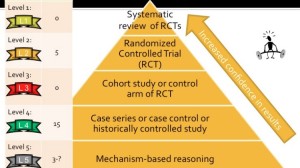
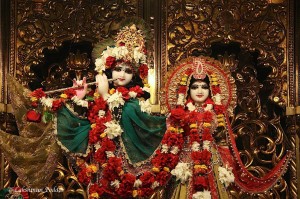


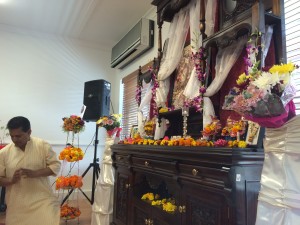
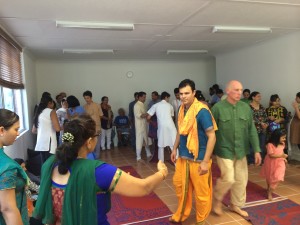
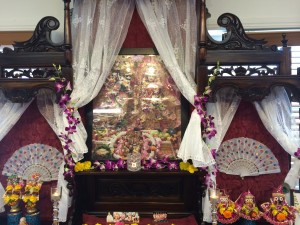
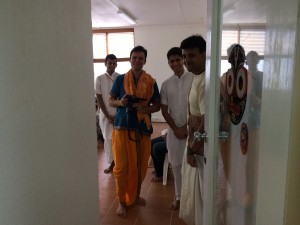


 Iskcon vrindavan
Iskcon vrindavan  A glimpse of Lord Jagannath on the chariot is considered to be very auspicious and saints. The sanctity of the festival is such that even a touch of the chariot or even the ropes with which these are pulled, is considered enough to confer the results of several pious deeds or penance for ages. This event will allow people to have glimpse of mystic India, illustrating the festival in full glory. Rathyatra is a great festival because of its ability to unite people in its festivity.
The Rathyatra festival has become common in most major cities of the world. It has been regularly organized in various cities of England (London, Crawley, Birmingham, Liecester, Cardiff). This is for the 4th time it is being organized by “Bath Hindu Community” in Bath on 7th June, 2014.
A glimpse of Lord Jagannath on the chariot is considered to be very auspicious and saints. The sanctity of the festival is such that even a touch of the chariot or even the ropes with which these are pulled, is considered enough to confer the results of several pious deeds or penance for ages. This event will allow people to have glimpse of mystic India, illustrating the festival in full glory. Rathyatra is a great festival because of its ability to unite people in its festivity.
The Rathyatra festival has become common in most major cities of the world. It has been regularly organized in various cities of England (London, Crawley, Birmingham, Liecester, Cardiff). This is for the 4th time it is being organized by “Bath Hindu Community” in Bath on 7th June, 2014.  By chanting the holy name of the Supreme Lord, one comes to the stage of love of Godhead. Then the devotee is fixed in his vow as an eternal servant of the Lord, and he gradually becomes very much attached to a particular name and form of the Supreme Personality of Godhead. As his heart melts with ecstatic love, he laughs very loudly or cries or shouts. Sometimes he sings and dances like a madman, for he is indifferent to public opinion. SB 11.2.40
By chanting the holy name of the Supreme Lord, one comes to the stage of love of Godhead. Then the devotee is fixed in his vow as an eternal servant of the Lord, and he gradually becomes very much attached to a particular name and form of the Supreme Personality of Godhead. As his heart melts with ecstatic love, he laughs very loudly or cries or shouts. Sometimes he sings and dances like a madman, for he is indifferent to public opinion. SB 11.2.40 

